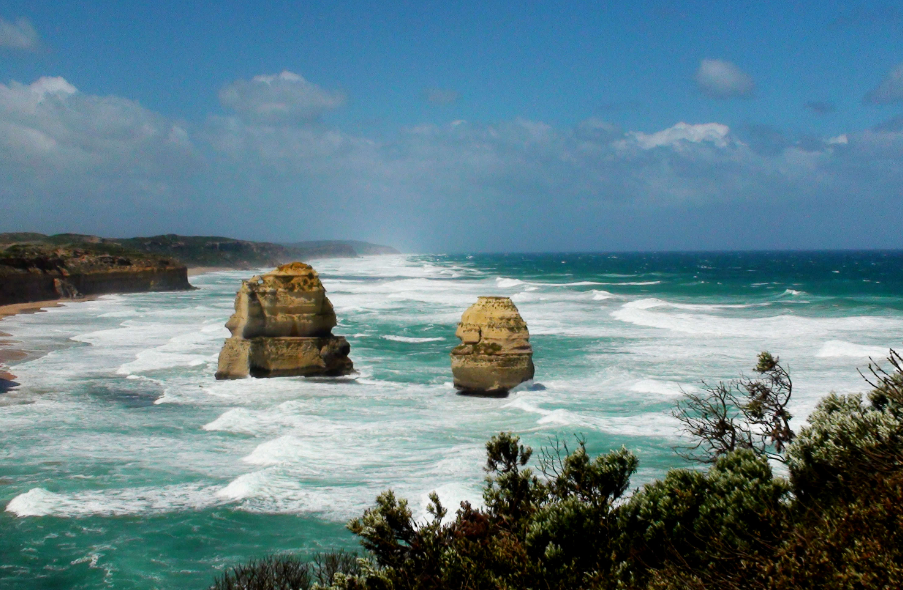
(Ruins of the ancient city of Timgard)
The ancient ruins of Timgad are the ruins of an ancient city in the Orese mountains, 1,072 meters above sea level, in northeastern Algeria. The city was originally built in the 1st century AD as a post of the Third Army of Augustus, and later the Roman Emperor Trajan established the city of Tamgardi here. In the 6th century the Berber uprising drove out the Romans and changed the name to Timgad. It was not until 1880 that the ruins of this ancient city were excavated by Algeria.
(Algiers Castle)
Algiers Castle, built in 935 by the Berbers and Arabs. The old part of Algiers is called "Casbah". Casbah is the old castle that's still on the top of the hill.
(Tipasa)
The ancient Roman site of Tipasa, located on the shores of the Mediterranean Sea, was founded in the 7th century BC along a cluster of monuments and the largest royal mausoleums in Mauritania, including Phoenician, Roman, early Christian and Byzantine sites.
Tipasa has become a famous tourist destination in Algeria, and its long and beautiful cultural landscape continues to attract countless tourists to visit.
(The Mzab Valley)
The landscape of Mzab Valley, built by the Ibadan people in the 10th century around their five Jisul, or castles, was completed surprisingly quickly.
Simple, practical and extremely adaptable. The architecture of Mzab is designed for group living, but also with the family structure in mind. The designers of today's urban buildings can learn from this.
(Tassili of Ajer)
The Tasili of Ajer, a mountain range on the edge of the Sahara Desert in Algeria, is a UNESCO World Heritage Site known for its geological formations and prehistoric cave art. The Tashili National Park in Ajer is located here.
(Cairo)
It is the capital and largest city of Egypt and the largest city in Africa and the Arab world. The city is located in the northeast of Egypt, the southern end of the Nile Delta, across the Nile River, majestic, spectacular, is the entire Middle East region of the political, economic, cultural, commercial and transportation center.
Cairo consists of the provinces of Cairo, Giza and Qalyoub, commonly known as Greater Cairo. Cairo is one of the oldest cities in the world. It is also one of the few ancient cities in the world that has been least damaged by war. And through the continuous construction and expansion of dynasties and governments, the formation of this ancient and modern coexistence and mutual beauty of the big city.
In Cairo, the buildings you can see everywhere are mosques and minarets. In Arabic, minarets are called "minars", referring to the place where the muezzin stands and calls people to prayer.
Since the 7th century, with the widespread spread of Islam in West Asia and North Africa, the art of mosque architecture has continued to develop, and minarets have also evolved into various styles, becoming an indispensable part of mosque architecture and a highlight of Cairo city.
(Nile)
It is a river flowing through eastern and northern Africa, flowing from south to north into the Mediterranean Sea. It is one of the three largest river systems in Africa, along with the Congo River in Central Africa and the Niger River in West Africa.
At 6,670 km long, the Nile is the longest river in the world. In 2007, a Brazilian scholar claimed that the Amazon River was longer, but it has not been widely accepted by the global geographic community. The Nile has two main tributaries, the White Nile and the Blue Nile.
The Blue Nile, which rises in the Ethiopian highlands, is the source of most of the water and nutrients in the lower Nile, but the White Nile is the longest of the two tributaries. The Nile crocodile lives here.
(Alexandria)
Alexandria (also translated as Alexandria, El Iskandaria) is Egypt's second largest city and largest port, is a port of Egypt on the southern coast of the Mediterranean Sea, and is the capital of Egypt's most important seaport, Alexandria province.
Its geographical position is 31°12' north latitude, 29°15' east longitude, 208 km northwest of Cairo. The now dry mouth of the Nile's branches lies 19 km east of Alexandria, where the ruins of the ancient city of Kanoperus are found. Its port nature is the mouth of the bay neck, with a free industrial area.

